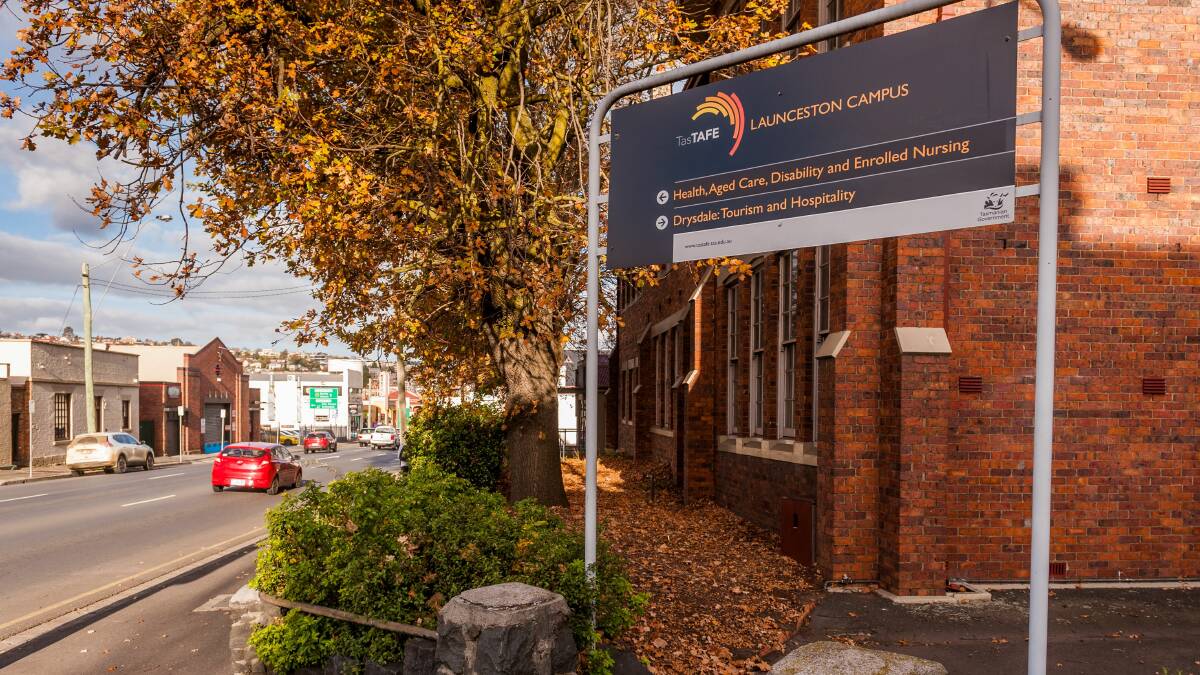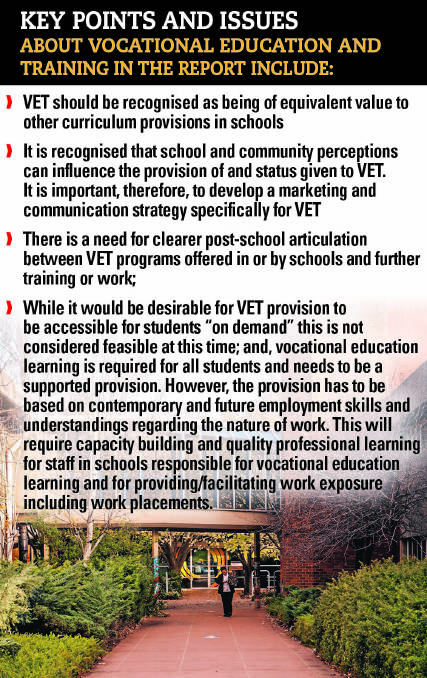
Extension of vocational education could help improve attainment of grade 11 and 12 students.
Subscribe now for unlimited access.
$0/
(min cost $0)
or signup to continue reading
The link has been drawn in a new report, published by Dr Phil Lambert this week.
The report is a recap of workshops attended to by 29 education stakeholders from across the state.
The aim of the report was to provide grade 11 and 12 students with a “seamless” experience that lead them to all higher education options.
RELATED STORIES:
One of the key recommendations in the report states vocational education “should have the same status” as other curriculum streams.
“A key matter considered by the participants included the extent to which both VET and VEL (vocational education learning) should be an entitlement for students or an optional provision where resources are available,” the report read.
The report aligns with the goals of The Examiner’s Pick up the Tools campaign, which aimed to investigate the role of VET in Tasmania.
Pick up the Tools has been investigating the importance of vocational education and how to bolster the efforts of public provider TasTAFE.
Recommendations for vocational education are:
- VET be recognised as having equivalent status to other curriculum provisions;
- Strategic planning be undertaken to extend VET for universal provision ensuring that regardless of where a student is located he/she can still access it
It also recommended that an upcoming VET forum address the following three areas:
- short and long-term planning for access to VET and VEL for school students
- setting VET and VEL targets and provision across Tasmania, with an aim for increased provision
- establishing or increasing industry-school partnerships in VET.
A government spokeswoman said the review would help to inform key frameworks for education in Tasmania.
“The implementation of the Years 9 to 12 Review will inform the governance of working groups to develop key pieces of work,” the spokeswoman said.

Frameworks that could be informed as a result of this review include the Years 9-12 curriculum framework and a statewide vision for vocational education for school students in Tasmania.
The report made several key findings about the state of the grade 11 and 12 curriculum and made recommendations on how to improve student experience.
“There are currently too many courses and many of these lack breadth and depth,” the report read.
“It is not sufficient to make pathways, the pathways must be meaningful in terms of the rewarding and beneficial outcomes they provide for students.”
It also noted the importance of so-called “soft skills”, such as communication, team work, social awareness, intercultural understanding and problem solving.
“Development of ‘soft skills’ for post-schooling destinations and to equip them for contemporary life should be embedded in course content.”
Stakeholders during the workshops noted the grade 11 and 12 student cohort was “diverse” and as such course provisions and options need to cater for those with complex needs or those disengaged with education.
The report also noted several limitations, challenges and opportunities concerning current and potential future pathway models.
“These included the extent to which the current model and course provisions support the full range of students meeting the requirements of the Education Act, and provide the quality of learning and skill development required for post-schooling destinations.”
“Another matter concerned the extent to which courses developed under the Years 9 to 12 Curriculum Framework would or should continue to reflect standard requirements.”
The report was made in response to a national report from 2016.


